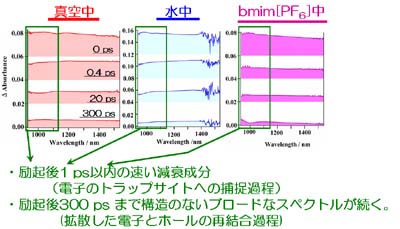
Femtosecond Time-Resolved Near-Infrared Spectroscopic System
Femtosecond Time-Resolved Near-Infrared Spectroscopic System
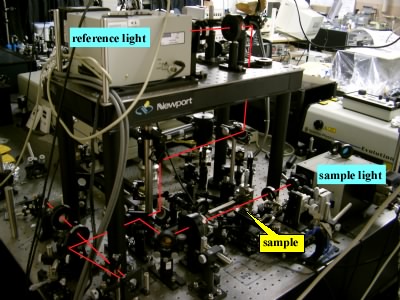
Fig. 1. Apparatus
- The second harmonic of the output of a Ti:sapphire regenerative amplifier (395nm, 1kHz, 200fs) is used as the pump light. The white light obtained by the self-phase modulation with the same amplifier output on a sapphire plate is used as the probe light.
- Two sets of near-infrared polychromators and InGaAs array detectors (256 channel) are used for recording reliable time-resolved near-infrared spectra. Spectral coverage of the polychoromator is 900-1500nm.
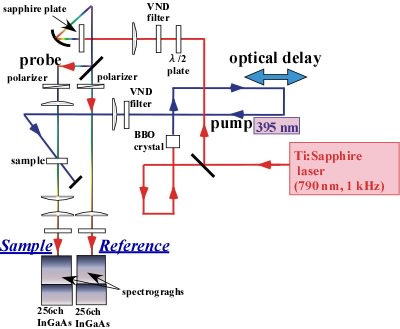
Fig. 2. Femtosecond time-resolved near-infrared spectroscopic System. Pulse duration ∼200fsAExcitation wavelength 395nm
Sample
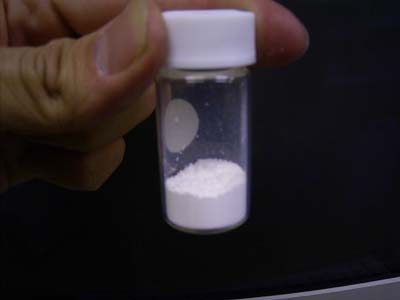
}3: Titanium dioxide
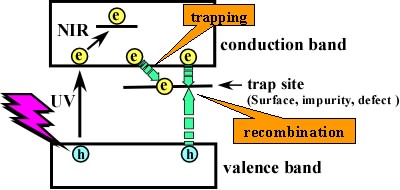
}4: Diagram
- Titanium dioxide (TiO2)
- White powders
- When TiO2 is photoirradiated, electrons and holes are generated. They eventually oxidize or reduce the reactants on the surface of the TiO2 particles.
- Direct absorption measurements with NIR. In the near-infrared region, transmittance of TiO2 is large facilitating the direct transmission measurement of absorption.
- Femtosecond time-resolved near-infrared study
- Transmission measurement is possible in the near-infrared region (900-1600nm).
We can measure the early-stage dynamics of charge carriers photogenerated in the TiO2 powders.
Results (Time-resolved near-infrared absorption spectra)
